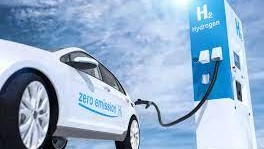Members of the European Parliament endorsed new EU rules on alternative fuels infrastructure regulation (AFIR) today. But the agreed regulation, based on a compromise reached during the negotiations, does not meet the level of ambition sought by the industry.
Today’s European Parliament plenary vote on AFIR further seals the deal agreed by the Council and Parliament in March 2023.
AFIR sets the deployment of alternative fuels infrastructure for battery-electric and hydrogen fuel-cell vehicles on the Trans-European Transport Network (TEN-T) as well as in urban nodes and safe and secure parking areas.
According to the deal, electric charging infrastructure dedicated to heavy-duty vehicles (HDVs) must be deployed every 120km on 15% of the entire length of the TEN-T network by the end of 2025. The distance will then be reduced to 60km on the core, and 100km on the comprehensive, network.
IRU welcomes the increase in the target for 2027 from 40%, as initially proposed by the Council, to 50%, as well as the unequivocal 100% target for 2030.
However, some important questions remain unanswered, notably relating to the derogations that Member States can use to limit infrastructure development or electricity generation, as well as the link between AFIR and the newly proposed CO₂ standards for HDVs.
IRU Director of EU Advocacy Raluca Marian said, “Although we made some progress during the negotiations, AFIR will only get going post-2030, at the earliest. The pre-2030 targets are insufficient.
“Furthermore, as we’ve been stating all along the negotiation process, without sufficient electrical power, heavy-duty vehicles will not be able to rely on AFIR’s charging infrastructure.
“AFIR therefore fails to address the electricity grid component of alternative fuels infrastructure for heavy-duty vehicles.”
Concerning hydrogen, the refuelling infrastructure will only be deployed every 200km on the TEN-T core network by the end of 2030.
“The hydrogen part is another big disappointment of AFIR. The European Parliament’s proposal to anticipate the deadline for the deployment of hydrogen refuelling infrastructure to the end of 2027 did not make it into the final text,” highlighted Raluca Marian.
“The road transport industry needs options and cannot rely on one single technology to decarbonise,” she added.
Urban nodes
During the trilogue negotiations, the electric power output requirements in urban nodes were increased, but the precise application of this condition remains vague.
“In the transition to zero-emission vehicles, urban areas are the low-hanging fruit. But AFIR puts the cost and responsibility to establish charging points almost entirely on transport companies, most of which are small and medium-sized enterprises with razor thin margins. Buses could, in theory, recharge at depots. But what about trucks and coaches?” highlighted Raluca Marian.
The same applies for hydrogen refuelling infrastructure. The role of a revised TEN-T regulation, which sets the location and number of urban nodes (424 in total, up from 88) across the EU, will play an important role in defining the location and accelerating the deployment of publicly accessible alternative fuels infrastructure in urban areas.
Taking stock
In a welcome step, the European Commission is required to submit to the European Parliament and the Council a technology and market readiness level report dedicated to HDVs by the end of 2024. The Commission will have to evaluate high-power recharging standards, electric road systems, and the availability of liquid hydrogen.
“The industry greatly appreciates AFIR’s report clause requiring the Commission to evaluate the technology and market readiness level from the standpoint of HDVs. The operational requirements of HDVs are different than light-duty vehicles and need to be properly assessed,” emphasised Raluca Marian.
“We also hope that the revision of the CO₂ standards for HDVs will match the status of alternative fuels infrastructure at every step of the way. Excessively ambitious targets for zero-emission vehicles in 2030 and 2035 do not seem feasible given the foreseeable infrastructure shortfalls,” she concluded. IRU will continue to work with its members and EU authorities to implement the Fit for 55 package and European Green Deal.
Tags: Alternative Fuels, Fuel Cell Car, Hydrogen Fuel Cells, Trans-European Transport Network



Recent Posts
Scandlines Nears Delivery of Zero Emissions Ferry Following Successful Sea Trials
India faces emission roadblocks with rising net-zero demands
Green Energy Resources invests in two electric Liebherr LHM 550
NYK Launches Continuous Use of Bio LNG Fuel on Car Carriers to Advance Decarbonization Goals
Yang Ming Expands Fleet with Methanol and LNG Dual-Fuel Vessels Under Fleet Optimization Plan
ClassNK Advocates Speed Gap Monitoring to Optimize Fuel Efficiency in Heavy Weather
Wärtsilä’s retrofit package for the Corsica Linea ferry Pascal Paoli has resulted in fuel savings of up to 22 percent Corsica Linea
COSCO Shipping Names Second Methanol Dual-Fuel Containership in Yangzhou